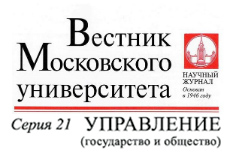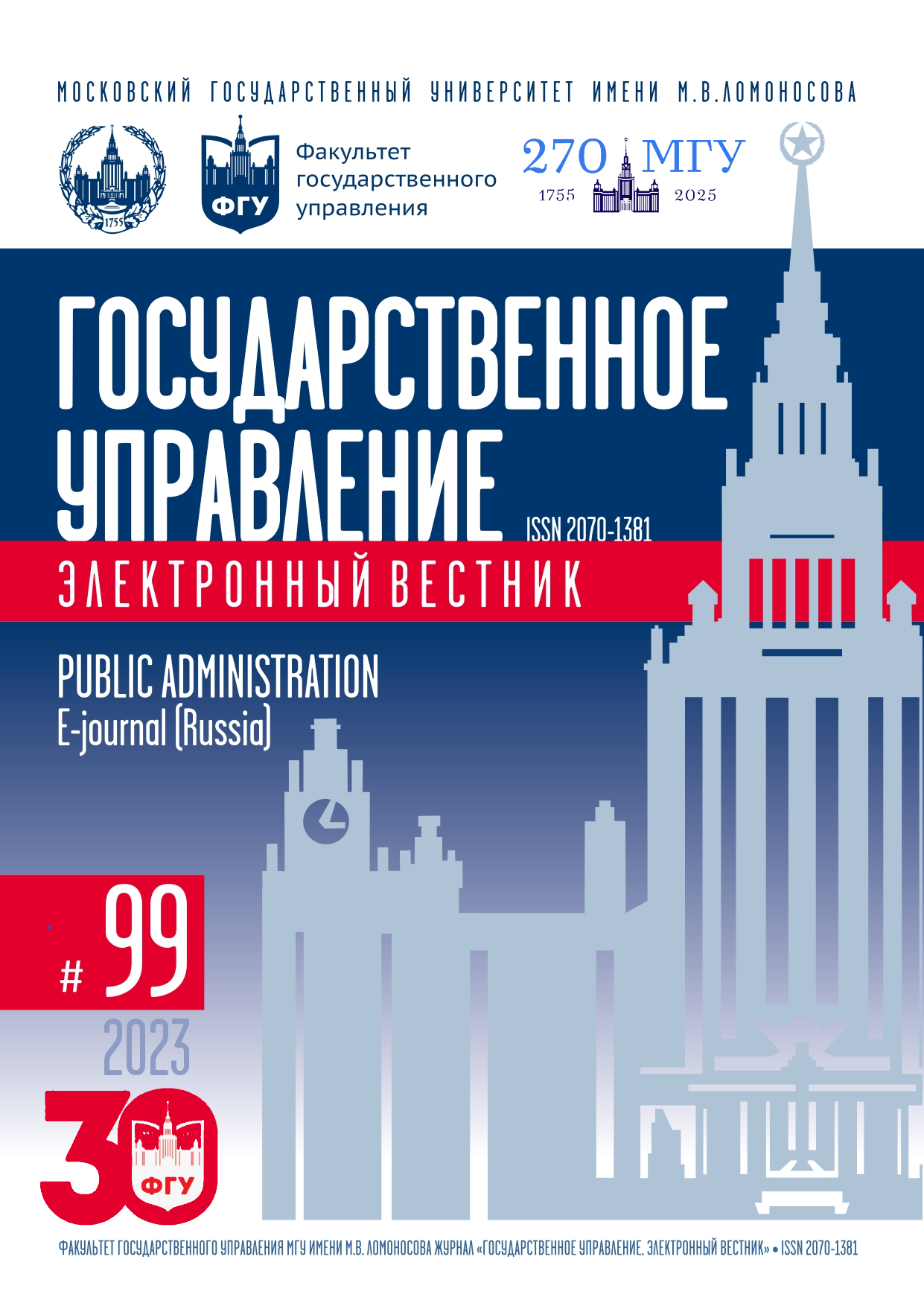Assessment of Spatial Development of the Volga Regions
Keywords:
Region space, development, territory, Volga, dynamics of spatial developmentAbstract
The most common approaches to assessing the development of regions include socio-economic, investment and resource analysis. Less attention is paid to assessing the spatial structure and spatial organization of territories. The study of existing approaches to the analysis of the regions’ spatial development has shown that they focus on determining the level of the spatial structure (organization) development, rather than identifying the factors influencing the development of the region’s space. This fact determined the goal to develop an approach for assessing spatial development as a process, and not as a state. This paper presents a methodology for assessing the spatial development of the Volga regions in the medium and long term with the identification of adverse factors. The study was based on a content analysis of scientific literature, a comparative analysis of various approaches devoted to the spatial development of territories, an analysis of a set of statistical indicators of Russian regions that characterize their state. The result of the analysis is the proposed approach to assessing the spatial development of the region as a process, assessing the spatial development of thirteen Volga regions and identifying the factors that negatively affected the spatial development of the selected subjects of the Russian Federation.
References
Аврамчикова Н.Т. Теоретические аспекты оценки качества экономического пространства // Региональная экономика: теория и практика. 2012. № 35. С. 2–13.
Аврамчикова Н.Т., Рожнов И.П., Монгуш С.П., Захарова Л.Н. Концептуальная основа пространственного социально-экономического развития взаимодействующих регионов (на примере регионов Сибирского федерального округа // Экономика и управление: проблемы, решения. 2020. Т. 1. № 2. С. 55–67.
Аврамчикова Н.Т., Чувашова М.Н. Инструменты оценки качества экономического пространства ресурсно ориентированного региона // Региональная экономика: теория и практика. 2015. № 28(403). С. 29–39.
Гранберг A.Г. Экономическое пространство России // Экономика и управление. 2006. № 2(23). С. 11–15.
Мирохина А.А. Мониторинг аномалий в развитии экономического пространства: предпосылки, концепция, инструментарий // Kant. 2018. № 4(29). С. 324–329.
Суворова А.В. Особенности оценки пространственных факторов развития экономики региона // Российские регионы в фокусе перемен: Сборник докладов XIV Международной конференции (Екатеринбург, 14–16 ноября 2019 года). Екатеринбург: ООО «Издательство УМЦ УПИ», 2020. С. 608–610.
Чернышов М.М. Интегральная оценка инвестиционной составляющей эффективности пространственного развития макрорегионов Российской Федерации // Региональные проблемы преобразования экономики. 2021. № 10. С. 101–114.
DOI: 10.26726/1812-7096-2021-10-101-114
Шеломенцев А.Г., Уханова А.В., Смиренникова Е.В., Воронина Л.В. Оценка пространственного развития регионов Арктической зоны Российской Федерации // Региональная экономика и управление: электронный научный журнал. 2018. № 4(56).
URL: https://eee-region.ru/article/5613/
Dadashpoor H., Malekzadeh N. Driving Factors of Formation, Development, and Change of Spatial Structure in Metropolitan Areas: A Systematic Review // Journal of Urban Management. 2020. Vol. 9. Is. 3. P. 286–297. DOI: 10.1016/j.jum.2020.06.005
Tasnim S., Mahbub F., Biswas G., Haque D.M.E. Spatial Indices and SDG Indicator-Based Urban Environmental Change Detection of the Major Cities in Bangladesh // Journal of Urban Management. 2022. Vol. 11. Is. 4. P. 519–529. DOI: 10.1016/j.jum.2022.09.004
Downloads
Published
Most read articles by the same author(s)
- Lidia S. Leontieva, Dan-Khayaa M. Kopush, A Complex of Management Tools to Overcome Differentiation of Region’s Spatial Development , Public Administration. E-journal (Russia): No. 103 (2024)
Similar Articles
- Boris M. Malashenkov , Vladislav V. Petryanin , Problems of Spatial Development of Cross-Border Regions , Public Administration. E-journal (Russia): No. 99 (2023)
- Stepan S. Sergeev, Peculiarities of Spatial Transformation of the Russian Federation Regions , Public Administration. E-journal (Russia): No. 107 (2024)
- Lidia S. Leontieva, Ksenia Yu. Proskurnova, Spatial Planning Levels for Territory Development , Public Administration. E-journal (Russia): No. 94 (2022)
- Anton P. Khlopko, Evolution of CSTO Bodies’ Structure in the Context of Transformation of Military and Political Situation in the Post-Soviet Space , Public Administration. E-journal (Russia): No. 107 (2024)
- Olga V. Grushina, Vladimir A. Rusanovsky, Managing Agglomeration Processes in the Development of Suburbanized Territories: A Case of Irkutsk Region , Public Administration. E-journal (Russia): No. 97 (2023)
- Irina E. Kalabikhina, Ekaterina A. Belnitskaya, The Effect of the State Program for the Resettlement of Compatriots to the Russian Far East: The Case of Khabarovsk Krai , Public Administration. E-journal (Russia): No. 112 (2025)
- Valery N. Minat, Ethnocultural Polarization of Government Personnel and the Choice of Public Administration Model (Using the Example of the Southwestern United States) , Public Administration. E-journal (Russia): No. 102 (2024)
- Dan-Khayaa M. Kopush, Lidiya S. Leontieva, Current Trends in the Spatial Development of Siberian Federal District Regions , Public Administration. E-journal (Russia): No. 95 (2022)
- Lidia S. Leontieva, Dan-Khayaa M. Kopush, A Complex of Management Tools to Overcome Differentiation of Region’s Spatial Development , Public Administration. E-journal (Russia): No. 103 (2024)
- Aleksandr S. Voronov, Mikhail S. Arbatskiy, Stepan S. Sergeev, Management Mechanisms of Spatial Development of the Ural Federal District Regional Innovative Systems: Possibilities of Transformation , Public Administration. E-journal (Russia): No. 95 (2022)
You may also start an advanced similarity search for this article.




